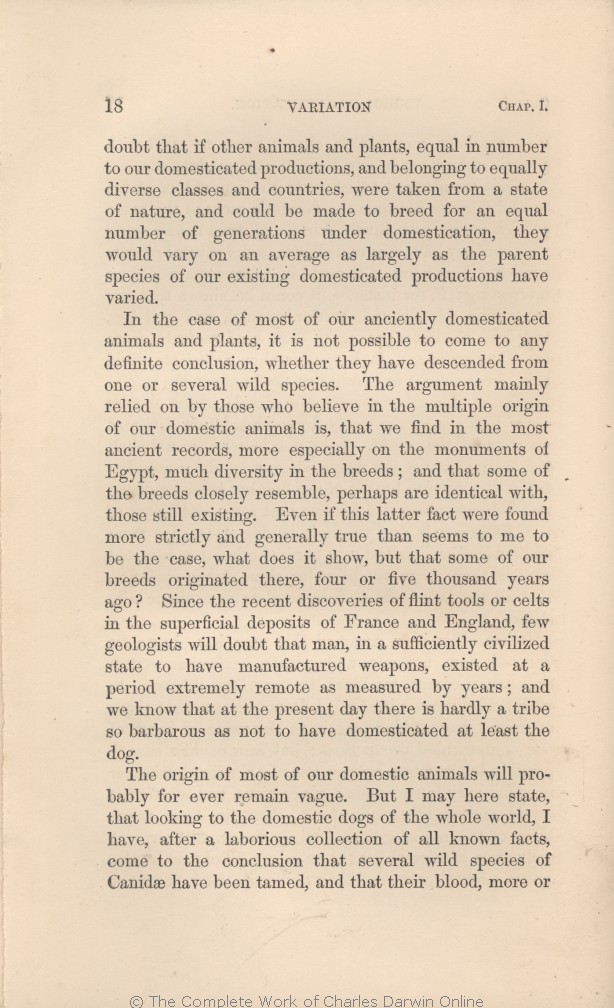In the case of most of our anciently domesticated animals and plants,
...| OMIT 1861 1866 1869 1872 |
| I do not think 1859 1860 |
| not possible 1861 1866 1869 1872 | | possible 1859 1860 |
| have 1859 1860 1861 1866 | | are 1869 1872 |
| wild species. 1860 1861 1866 1869 1872 | | species. 1859 |
| records, more especially 1859 1860 1861 |
| times, 1866 1869 1872 |
| much diversity 1859 1860 1861 | | and 1866 1869 1872 |
| breeds; and that some of 1859 1860 1861 |
| lake-habitations of Switzerland, much diversity in 1866 1869 1872 |
| breeds 1859 1860 1861 | | breeds; 1866 1869 1872 |
| closely resemble, perhaps are 1859 1860 1861 |
| and that some of these ancient breeds closely resemble or are even 1866 1869 |
| and that some of these ancient breeds closely resemble, or are even 1872 |
| with, 1859 1860 1861 1872 | | with 1866 1869 |
| 3 blocks not present in 1859 1860 1861; present in 1866 1869 1872 | | But this only throws far backwards the history of civilization,
and shows that animals were domesticated at a much earlier period than has hitherto been supposed.
The lake-inhabitants of Switzerland cultivated several kinds of wheat and barley, the pea, the poppy for oil, and flax; and they possessed several domesticated animals;
they
had
also commerce
with other nations.
All this clearly shows, as Heer has remarked, that they had at this early age progressed considerably in civilization;
and this again implies a long-continued
previous period of less advanced civilization,
during which the domesticated animals, kept by the
different tribes and
in different districts, might have varied and given rise to distinct races.
|
| 1 blocks not present in 1859 1860 1861 1866; present in 1869 1872 | | Since the discovery of flint tools or celts
in the superficial formations in
many parts of the world, all geologists believe that barbarian man existed at an enormously remote period; and we know that at the present day there is hardly a tribe so barbarous
as not to have domesticated at least the dog.
|
| discoveries 1861 | | discovery 1866 |
| deposits 1861 | | formations 1866 |
| will doubt 1861 | | believe 1866 |
| sufficiently civilized state to have manufactured weapons, 1861 |
| barbarous condition 1866 |
| a period extremely remote as measured by years; 1861 |
| an enormously remote period; 1866 |
|
The origin of most of our domestic animals will probably for ever remain vague. But I may here state,
that | that 1861 | | that, 1866 1869 1872 |
| more or less mingled, 1861 |
| more or less mingled 1866 |
| in some cases mingled together, 1869 1872 |
|









